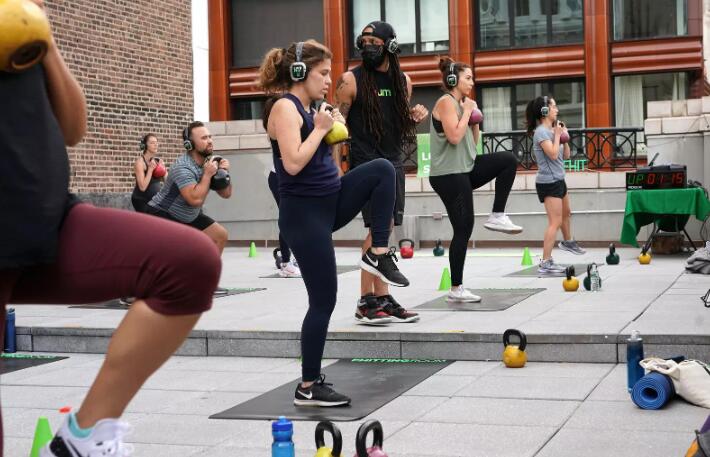Combining yoga with other exercises can lead to maximum fitness results. For instance, pairing yoga with strength training can increase flexibility while building muscle strength. This can lead to improved posture, better joint stability, and overall physical performance.
Additionally, combining yoga with cardio exercises, such as running or cycling, can boost cardiovascular health and endurance. Yoga can also help with recovery by reducing muscle soreness and improving blood flow.
In this blog post, we will discuss the advantages of combining yoga with other exercises, as well as explore the different types of yoga and their principles.
Benefits of Combining Yoga with Other Exercises
Yoga has become an increasingly popular form of exercise due to its numerous benefits for the mind, body, and spirit. Besides increased fitness benefits, combining yoga with other exercises can help prevent injury.
Yoga postures help lengthen muscles and improve range of motion, making it an excellent addition to pre-workout routines. Practicing yoga after a workout can also aid in muscle recovery by reducing inflammation and preventing muscle stiffness.
Furthermore, incorporating yoga into other forms of exercise can lead to numerous mental benefits.
Yoga is known to reduce stress levels, promote relaxation, and increase mindfulness. Combining yoga with exercises that already have mental benefits, like swimming or walking, creates a more complete workout that promotes overall well-being.
Types of Exercises to Combine with Yoga
It’s an excellent form of exercise that not only strengthens the body but also calms the mind. However, some people may find that they need to incorporate other types of exercise into their workout routine to achieve their fitness goals.
1. Strength Training
One of the best ways to complement your yoga practice is to add strength training to your workout routine. Strength training can help build and tone muscles that yoga alone cannot target.
Incorporate exercises such as squats, deadlifts, and lunges to work your core, legs, and glutes. Also, consider using resistance bands or weights to add more difficulty to your exercises.
2. Cardio
Yoga is excellent for building strength and flexibility, but it’s not the best for cardiovascular fitness. Consider adding cardio exercises such as running, cycling, or jump roping to help improve your heart health.
These exercises can also help you burn more calories than yoga alone, which can aid in weight loss.
3. Pilates
Pilates is another low-impact exercise that you can combine with yoga. Pilates focuses on strengthening the core, which is essential for better balance and posture.
The exercises in Pilates are also gentle yet effective, making it perfect to combine with yoga for a full-body workout.
4. HIIT

High-Intensity Interval Training (HIIT) is a great way to add some intensity to your workout routine. HIIT workouts involve alternating between periods of high-intensity exercise and periods of low-intensity rest or recovery.
It’s an excellent way to burn calories, build endurance, and improve your cardiovascular fitness. Consider doing a quick HIIT workout after your yoga practice to challenge your body and mind.
5. Barre
Barre is a fusion of ballet, Pilates, and strength training that can complement your yoga practice. Barre exercises are low-impact, but they can still work your muscles to exhaustion.
Barre is also an excellent way to improve your balance and coordination, which can help improve your yoga practice.
6. Tai Chi
Tai Chi is a form of martial arts that focuses on slow, fluid movements, and breath control. It’s an excellent complement to yoga because it emphasizes mindfulness, relaxation, and balance. Tai Chi can also help improve joint mobility, which can aid in injury prevention.
7. Swimming
If you’re looking for a low-impact exercise that can still provide you with a full-body workout, consider swimming.
Swimming is an excellent way to build endurance, strength, and cardiovascular fitness without putting any stress on your joints. It’s also a great way to improve your breathing technique, which can help enhance your yoga practice.
Tips for Safely Combining Yoga with Other Exercises

While mixing exercises is a great idea, it’s important to do so wisely to prevent injury and maximize results. In this blog, we’ll share vital tips to help you safely and effectively combine yoga with other exercises.
1. Make Sure to Warm Up First:
Before beginning any exercise routine, a proper warm-up is essential to prevent injury and prepare your body for strenuous activity.
For yoga, this may include some basic stretches, such as neck, shoulder, and hip rotations, as well as several sun salutations or cat-cows.
When combining yoga with other exercises, it’s important to warm up the specific muscle groups you’ll be working during the other exercises, such as doing leg swings before a plyometric workout or shoulder shrugs for weightlifting.
2. Focus on Proper Form and Alignment:
Just like with any exercise, proper form and alignment are critical to your success and safety, particularly when combining exercises.
For yoga, this means taking the time to master the foundational poses before adding in more complex ones. Make sure you’re engaging the right muscles and keeping your body in a straight line.
When incorporating other exercises, such as weightlifting or running, focus on your posture and body positioning to ensure you’re using proper form, preventing injury, and maximizing the benefits of the exercises.
3. Consider Your Breath:
Breathing is an essential component of yoga. It helps you maintain focus, calmness, and stability throughout your practice.
But it’s equally important to remember to breathe properly when combining yoga with other exercises. Breathing effectively can help you perform better, reduce muscle tension, and prevent lactic acid buildup.
Try to sync your breath with your movements, such as inhaling on the lift and exhaling on the release. This can help you maintain power and prevent getting out of breath too quickly.
4. Plan Your Workouts Wisely:
When planning out your yoga and other exercise routine, it’s essential to mindfully schedule and balance your workouts to avoid overexertion and burnout.
Make sure to give your body adequate rest and recovery time between workouts to prevent injury and promote muscle growth.
You can mix and match your exercises throughout the week, combining yoga with weightlifting, running, or plyometrics in a way that works for your personal fitness goals and schedule.
5. Listen to Your Body:
Finally, the most important tip when combining exercises is to listen to your body. Every individual is different and has unique physical limitations and goals. Be patient with yourself and honor your body’s needs and limitations.
If you feel pain or discomfort during your workout, it’s essential to rest and recover. Take care of yourself and always prioritize your safety and health above achieving any specific fitness goals.
Conclusion
In conclusion, combining yoga with other exercises can offer many physical and mental benefits. With proper planning and mindful execution, it can help improve strength, endurance, flexibility, coordination, and reduce stress levels while preventing injury. When done correctly, it can be a great way to challenge yourself and reach your personal fitness goals.
